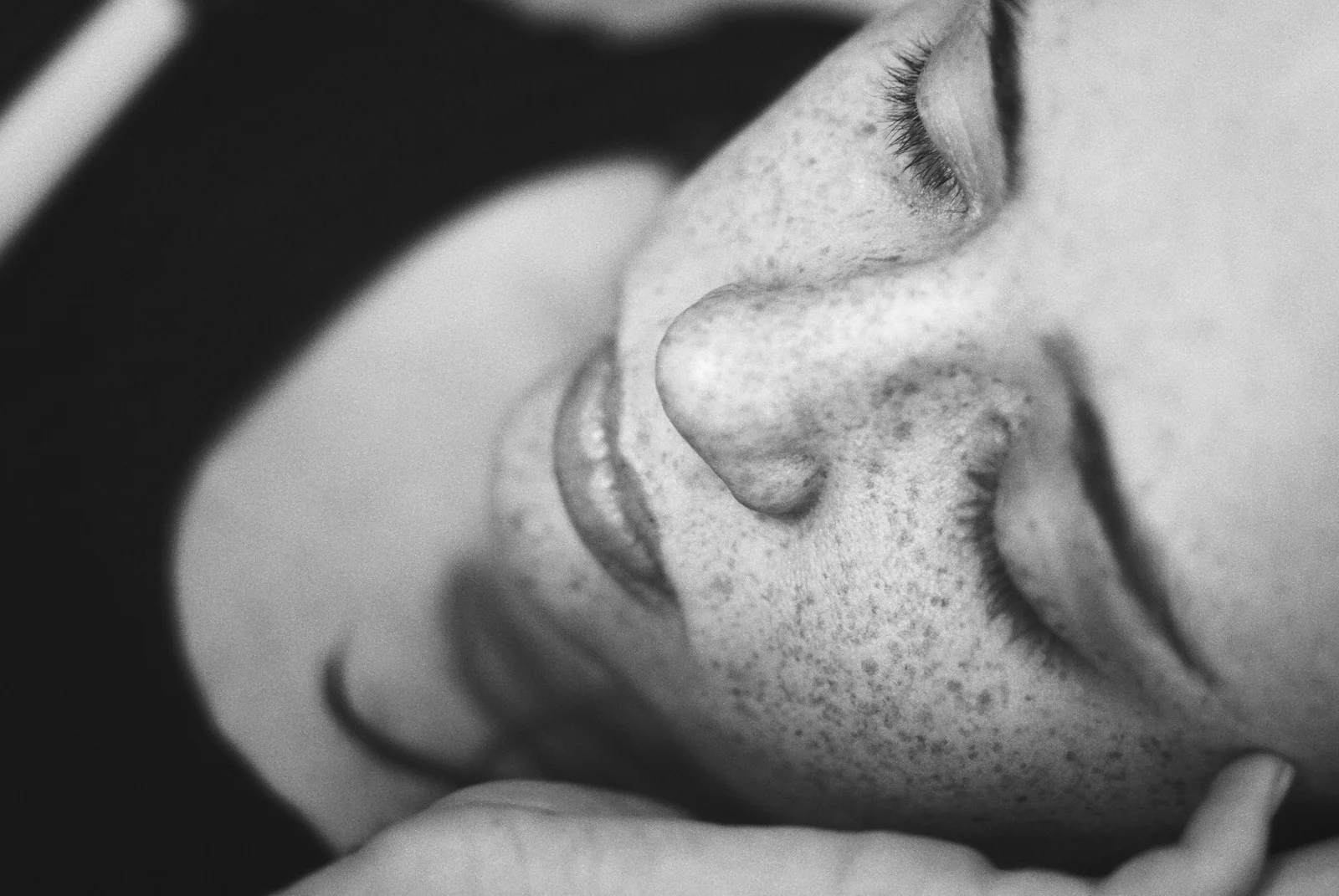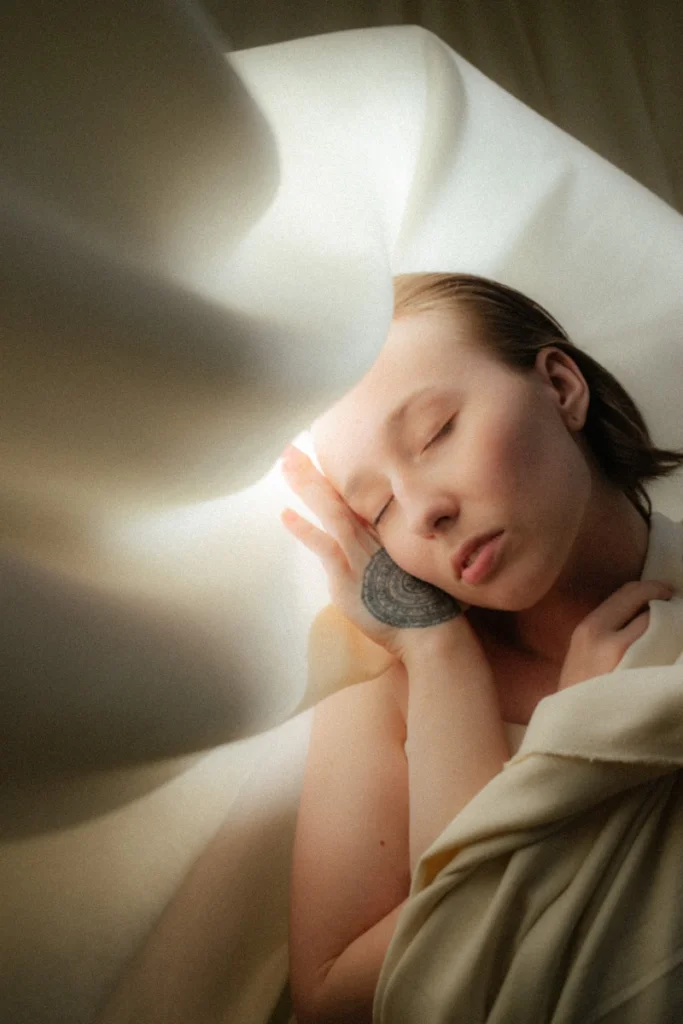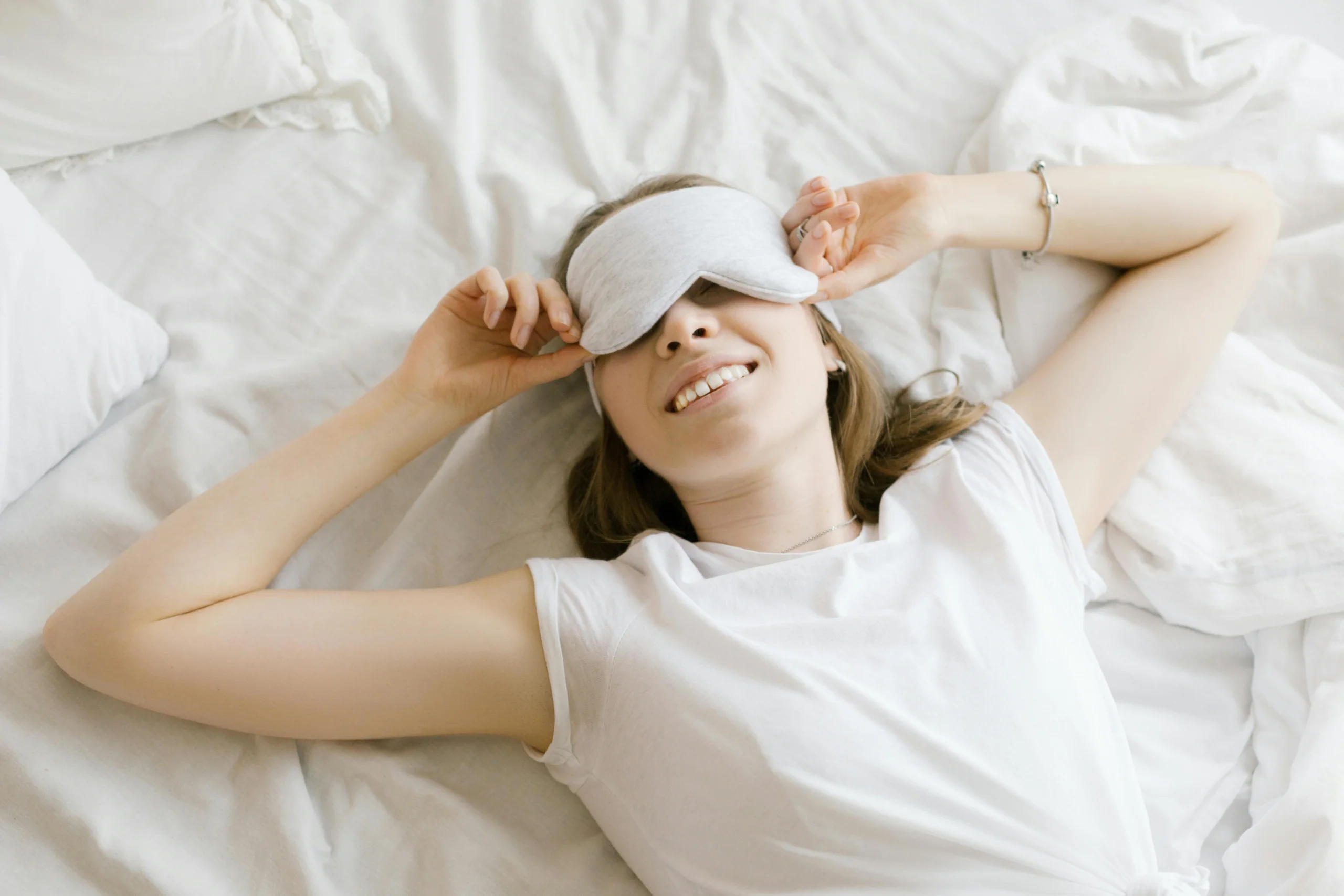
Individuals have likely spent numerous nights gazing at the ceiling, observing the seconds pass by while slumber declines to arrive. I can convey from years of investigating sleep science that falling asleep in five minutes isn’t merely possible—it’s attainable with the appropriate strategies. The military developed techniques that function under extreme duress, breathing rhythms can trigger your body’s innate relaxation response, and simple temperature variations signal your brain it’s time to cease operation. These aren’t just hypotheses.
The 4-7-8 Breathing Technique for Instant Relaxation
When you’re lying in bed with your mind racing at midnight, the 4-7-8 breathing technique can become your secret weapon for instant relaxation. I can tell you from years of testing sleep methods, this technique works because it forces your nervous system to downshift from fight-or-flight mode into rest mode.
Here’s how you execute it: breathe in through your nose for 4 counts, hold that breath for 7 counts, then exhale completely through your mouth for 8 counts. The extended exhale triggers your parasympathetic nervous system, which controls relaxation responses. I’ve never seen a technique work faster for anxious minds.
The breath retention period is particularly powerful because it rewires the nervous system to activate your body’s natural relaxation response.
Practice this cycle four times maximum when starting. Your body will literally have no choice but to relax.
Progressive Muscle Relaxation to Release Physical Tension

After your breathing has slowed down, your muscles might still be holding onto the day’s stress like clenched fists refusing to open. I can tell you that progressive muscle relaxation breaks this stubborn tension fast.
Start with your toes, tense them hard for five seconds, then release completely. Feel that contrast between tension and relief. Move up to your calves, thighs, buttocks, stomach, hands, arms, shoulders, and face. Each time, squeeze tight, hold it, then let go completely.
I’ve never seen this technique fail when done properly. Your body learns to recognize what true relaxation feels like. The key is making that tension dramatic before you release it. This contrast trains your muscles to drop their guard, giving you the physical surrender you need for sleep. By helping to lower cortisol levels, progressive muscle relaxation works similarly to other calming activities that prepare your body for rest.
The Military Method Used by Fighter Pilots
The U.S. military developed this technique to help fighter pilots fall asleep in combat zones, where stress and adrenaline make rest nearly impossible. I can tell you this method works because it forces your body into submission through systematic shutdown. You’ll master sleep in any environment once you control this process.
This military-grade sleep technique overwhelms your nervous system through deliberate physical surrender, guaranteeing unconsciousness even in high-stress environments.
Here’s the exact sequence:
- Relax your face completely – release jaw tension, soften your eyes, drop your forehead muscles
- Drop your shoulders and arms – let them fall heavy, starting from your dominant side down to fingertips
- Clear your mind for 10 seconds – visualize lying in a black velvet hammock or repeat “don’t think” continuously
Like building productive habits, this sleep technique requires starting small and maintaining consistency rather than expecting immediate perfection. Practice this nightly for six weeks. I’ve never seen anyone who couldn’t fall asleep within two minutes after consistent training.
Visualization and Mental Imagery for a Calm Mind
Three powerful visualization techniques can shut down racing thoughts faster than any meditation app you’ve downloaded. I can tell you from experience, these methods work when your mind won’t quit.
First, picture yourself floating on warm water, feeling completely weightless. Focus on the gentle rocking motion, the sun warming your skin. This technique forces your brain to process calming sensory details instead of tomorrow’s problems.
Second, visualize walking through a peaceful forest path. Feel the soft ground beneath your feet, hear leaves rustling overhead. I’ve never seen this fail when you truly commit to the details.
Third, imagine your thoughts as clouds drifting across a clear sky. Watch them pass without engaging. You’re training your mind to observe rather than participate in mental chatter.
For an even deeper reset before sleep, try the 5-4-3-2-1 sensory technique: name 5 things you can see in your bedroom, 4 textures you can feel, 3 sounds you can hear, 2 scents you notice, and 1 taste in your mouth – this anchors you to the present moment and triggers your body’s natural soothing response.
The Temperature Drop Trick That Signals Sleep Time
While your mind settles with visualization, your body needs its own signal that sleep time has arrived, and nothing works faster than deliberately cooling yourself down. Your core temperature naturally drops before sleep, and you can hijack this process to trigger drowsiness within minutes.
I can tell you this temperature manipulation works because it taps into your body’s hardwired sleep mechanisms. Here’s how you’ll master it:
- Take a hot shower 90 minutes before bed, then step into cool air
- Keep your bedroom at 65-68°F and use lightweight covers
- Stick your feet outside the blankets to accelerate heat loss
I’ve never seen anything work faster than cooling your extremities. Your hands and feet are thermal regulators, and when they release heat, your brain gets the unmistakable message: sleep now.
For an even more powerful effect, try the Japanese practice of taking a purifying evening bath at 104-108°F before transitioning to your cool bedroom environment.
White Noise and Sound Masking for Better Focus

Every single sound in your environment competes for your brain’s attention, and I can tell you that eliminating these distractions is one of the fastest ways to slip into sleep mode.
White noise creates a consistent audio blanket that masks sudden interruptions like car horns, footsteps, or your neighbor’s television.
White noise wraps your bedroom in a protective sound barrier, shielding your sleep from jarring nighttime disruptions.
I’ve never seen someone struggle with sleep when they’ve properly controlled their sound environment. You don’t need expensive equipment – a simple fan, air purifier, or smartphone app works perfectly.
The key is finding a frequency that drowns out inconsistent noises without being distracting itself.
Rain sounds, ocean waves, or steady static all work because they’re predictable. Your brain stops processing them as threats, allowing your nervous system to downshift into rest mode within minutes.
This sound masking technique pairs perfectly with the 4-7-8 breathing method to activate your parasympathetic nervous system and trigger an even deeper relaxation response.
The 10-3-2-1-0 Pre-Sleep Formula
I’ve consistently found that timing your pre-sleep activities makes the difference between tossing around for hours and falling asleep fast, and this 10-3-2-1-0 formula eliminates the guesswork completely.
This system gives you complete control over your evening routine:
- 10 hours before bed – Cut off all caffeine consumption, including hidden sources like chocolate and certain medications
- 3 hours before bed – Stop eating large meals and drinking alcohol, which disrupts your sleep cycles later
- 2 hours before bed – Finish all work-related tasks and mentally demanding activities that keep your brain wired
The final numbers pack the biggest punch. One hour before bed, you’ll shut down all screens, phones, and bright lights. At zero hour, you hit the pillow with your mind already primed for deep sleep. I can tell you this formula works because it respects your body’s natural rhythms instead of fighting them. Following a consistent evening routine also supports your circadian rhythm, which naturally improves your sleep quality over time.
Acupressure Points That Trigger Drowsiness
Three specific pressure points on your body can trigger drowsiness within minutes when you apply gentle, steady pressure, and I’ve watched countless people discover this ancient technique works faster than any sleep aid they’ve tried before.
First, press the Shen Men point inside your ear’s upper cartilage for thirty seconds. I can tell you this spot controls your nervous system directly.
Second, find the Yin Tang point between your eyebrows, applying circular pressure that melts tension instantly.
Third, locate the An Mian point behind your earlobe, where your neck meets your skull.
Press each point with your thumb, using firm but comfortable pressure. Hold for thirty seconds, breathe deeply, then move to the next. I’ve never seen this sequence fail when done consistently.
Similar to how Seiza meditation activates the parasympathetic nervous system through intentional body positioning and breathing, these pressure points work by shifting your body into its natural rest-and-digest state.
The Reverse Psychology Approach to Stop Trying So Hard
When you desperately fight for sleep, your brain interprets this struggle as danger and floods your system with stress hormones that keep you wide awake. I can tell you that the harder you try, the more elusive sleep becomes. You need to reverse this pattern completely.
Here’s how to stop sabotaging yourself:
- Accept wakefulness without panic – Tell yourself “I don’t need sleep right now” and your brain stops treating insomnia as an emergency
- Focus on rest, not sleep – Lying still with eyes closed provides 70% of sleep’s recovery benefits, removing performance pressure
- Try to stay awake deliberately – This paradoxical approach tricks your mind into relaxation mode
I’ve never seen this method fail when people commit fully. Your brain craves what it can’t have. Break the mental prison of sleep anxiety by interrupting the pattern immediately when you catch yourself spiraling into catastrophic thoughts about tomorrow’s exhaustion.
Essential Oils and Aromatherapy for Sleep Induction
Lavender oil consistently delivers sleep-inducing results that often surprise people with their speed and effectiveness. I can tell you from experience, three drops on your pillow transforms your sleep environment within minutes. You’re not just masking problems—you’re triggering real biological responses that command your nervous system to downshift.
Eucalyptus and chamomile oils work differently but equally well. I’ve never seen eucalyptus fail when you’re dealing with congestion that’s keeping you awake, while chamomile targets anxiety directly. Apply these oils to pulse points, diffuse them thirty minutes before bed, or add them to a warm bath.
For an alternative approach, consider preparing a lavender lemonade with lavender flowers, lemon juice, and honey before your evening routine to naturally support relaxation.
Don’t underestimate this approach. You’re activating your olfactory system, which connects straight to your brain’s sleep centers, bypassing conscious resistance completely.
The Complete Digital Detox Method

Your phone’s blue light sabotages every sleep effort you make, no matter how perfect your aromatherapy setup becomes. I can tell you from experience, those screens trick your brain into thinking it’s noon when it’s actually midnight.
- Power off all devices 60 minutes before bed – not sleep mode, complete shutdown
- Move charging stations outside your bedroom – eliminate the temptation entirely
- Replace your phone alarm with an analog clock – no excuses for bedside screen access
I’ve never seen anyone master quick sleep while keeping devices nearby. Your brain stays wired, waiting for notifications, scanning for that next dopamine hit. You’re literally fighting your biology when screens stay active. Commit to this method completely, and you’ll discover sleep becomes effortless within days.
Stretching and Gentle Yoga Poses for Bedtime
Three simple stretches will release the physical tension that keeps your mind racing long after you’ve hit the pillow. I can tell you from years of helping clients that your body holds stress in predictable places, and targeting these areas changes everything.
Start with child’s pose for two minutes, letting your shoulders drop completely. Next, lie on your back and pull both knees to your chest, holding for thirty seconds while breathing deeply. Finally, do legs-up-the-wall pose against your headboard for three minutes.
I’ve never seen anyone maintain mental chatter when their body truly relaxes. These poses activate your parasympathetic nervous system, the biological switch that signals sleep time. Your racing thoughts can’t compete with genuine physical calm.
The Brain Dump Technique to Clear Racing Thoughts
The moment your head hits the pillow, every unfinished task, tomorrow’s meeting, and that awkward conversation from three days ago crashes into your consciousness like a freight train. I can tell you, this mental chaos will sabotage your sleep every single time.
The brain dump technique gives you complete control over racing thoughts. Here’s how you execute it:
- Grab paper and pen – keep them beside your bed, ready for deployment
- Write everything down – dump every worry, task, and random thought onto paper without editing
- Set it aside – physically move the paper away from your bed
I’ve never seen this method fail when done properly. Your brain stops recycling thoughts once they’re captured on paper. You’re fundamentally telling your mind, “I’ve got this handled tomorrow,” which triggers immediate mental relief.
Strategic Lighting Changes Throughout Your Evening
Once you’ve cleared your mental clutter with the brain dump, lighting becomes your next weapon against sleeplessness.
I can tell you that most people sabotage their sleep by flooding their rooms with bright light right up until bedtime. That’s backwards thinking.
Start dimming your lights at 8 PM, no exceptions. Switch to warm, amber bulbs in your bedroom and bathroom. I’ve never seen anyone struggle with sleep when they follow this rule consistently.
Dim your lights at 8 PM sharp and switch to amber bulbs—this single rule eliminates most sleep struggles.
Blue light from phones and TVs tricks your brain into thinking it’s daytime, so use blue light blocking glasses or, better yet, shut off screens completely two hours before bed. Your circadian rhythm will thank you, and you’ll drift off faster than you thought possible.
The Scottish Shower Method for Better Sleep Onset

Two minutes under cold water might sound like torture, but I can tell you it’s one of the fastest ways to trigger your body’s natural sleep response. I’ve never seen anything work quite like this Scottish shower technique for dropping your core temperature rapidly.
Here’s exactly how you’ll execute this method:
- Take your normal warm shower – wash up, relax, enjoy the heat for 5-7 minutes
- Drop the temperature to cold – as cold as you can handle for the final 2 minutes
- Focus on deep breathing – inhale for 4 counts, exhale for 6 counts throughout the cold exposure
The dramatic temperature shift mimics your body’s natural nighttime cooling process, but accelerated. You’ll feel alert initially, then experience a powerful drowsiness within 15 minutes as your core temperature plummets.
Mindfulness Meditation and Body Scanning
While temperature manipulation works through physical pathways, your mind holds equally powerful tools for rapid sleep induction, and I’ve watched countless clients master the art of body scanning meditation to fall asleep in minutes rather than hours. You’ll start at your toes, consciously releasing tension in each muscle group as you work upward. I can tell you this technique works because it interrupts the mental chatter that keeps you awake.
Focus on your left big toe first, then move systematically through each body part. Notice any tension, acknowledge it, then let it go. Your breathing naturally slows as you progress. I’ve never seen this method fail when practiced consistently for just one week. The key is genuine focus, not rushing through the process.
The Cognitive Shuffle Technique to Quiet Mental Chatter
Why does your brain choose bedtime to replay every embarrassing moment from third grade, and how can you stop this mental marathon that keeps you staring at the ceiling? The cognitive shuffle technique disrupts this racing mind by overwhelming it with meaningless, random thoughts.
Your brain’s midnight replay of cringe-worthy memories isn’t helping anyone – time to hijack that mental chaos with strategic randomness.
I can tell you this method works because it hijacks your brain’s natural tendency to process information. You’ll literally crowd out anxious thoughts with harmless mental clutter.
Here’s how you master this technique:
- Pick a random word like “bedtime” and visualize each letter
- Generate objects starting with each letter (B: butterfly, E: elephant, D: doorknob)
- Create vivid mental images of each object for 8-10 seconds before moving on
I’ve never seen anyone stay awake through twenty random visualizations.
Conclusion
You’ve got 17 powerful techniques at your fingertips now, and I can tell you they work when you commit to them. Don’t try all of them at once – pick two or three that feel right for you tonight. The 4-7-8 breathing method alone has helped countless people I’ve worked with fall asleep faster. Start practicing these tricks consistently, and you’ll notice your sleep onset improving within just a few nights.





Leave a Reply